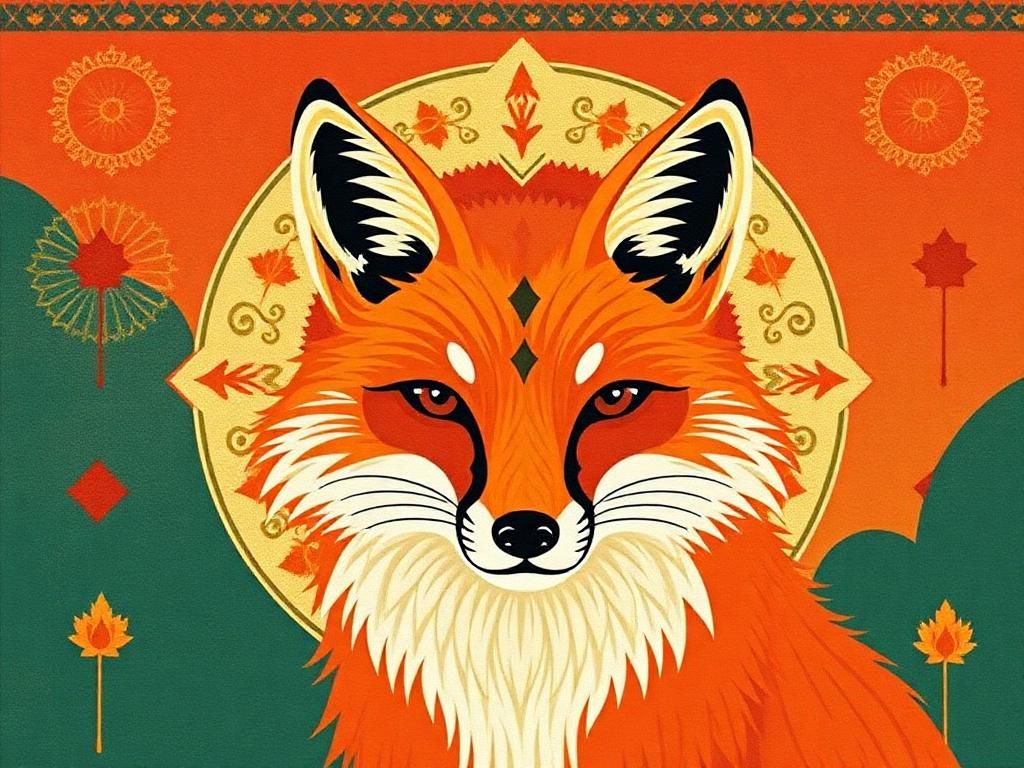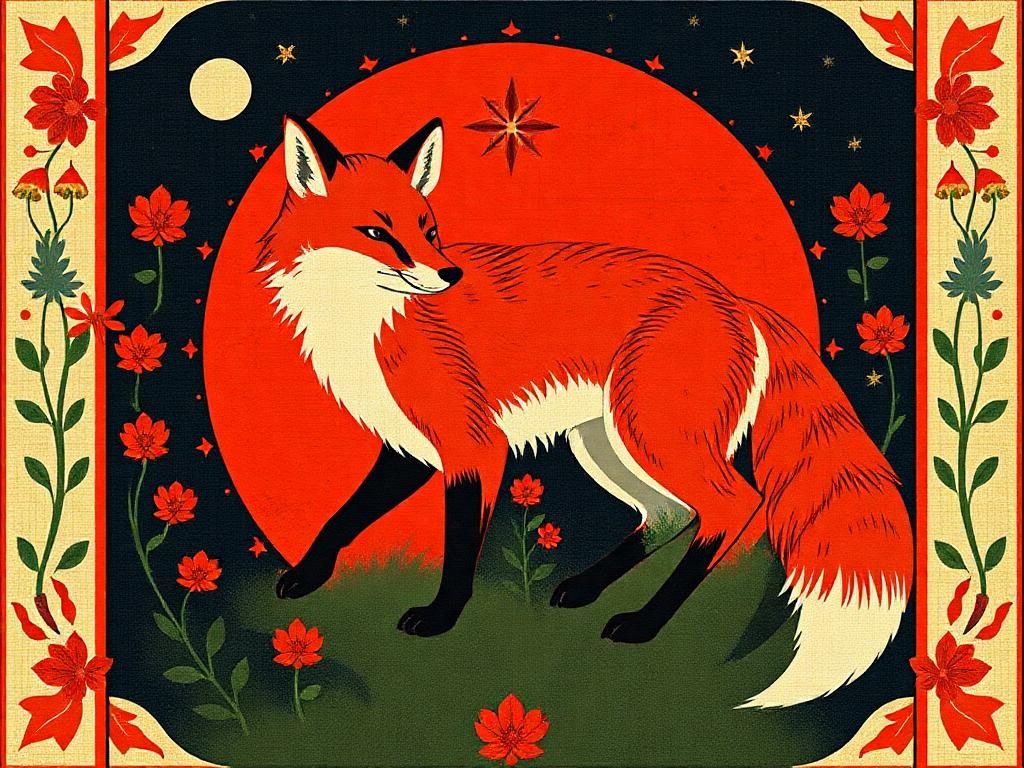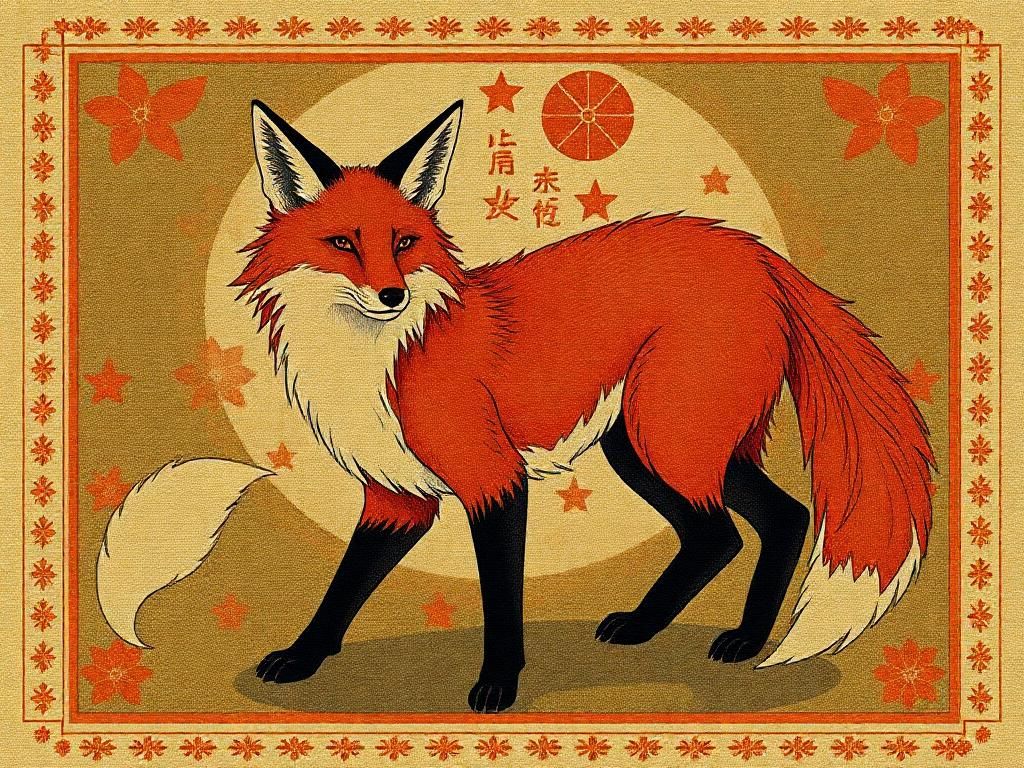Fox symbolism plays a significant role in various cultures, representing a wide range of meanings and associations. Throughout history, foxes have been revered for their cunning and adaptability, and they serve as powerful symbols in folklore and spirituality. Understanding the depth of fox symbolism allows us to appreciate the intricate ways in which these animals are woven into the tapestry of human beliefs and experiences.
Cultural Significance of Foxes
Fox Symbolism in Native American Traditions
In Native American folklore, the fox is often seen as a trickster figure, embodying qualities of cunningness and intelligence. Various tribes have stories that feature the fox as a character who uses wit to navigate challenges, reflecting the importance of adaptability in their culture. Additionally, the fox is associated with spiritual teachings, where it embodies lessons on survival and cleverness. For example, some tribes consider the fox a messenger between the human world and the spiritual realm, indicating that its presence can guide individuals toward important truths.
Foxes in European Folklore
European folklore frequently portrays the fox as a symbol of slyness and trickery. Classic tales like Aesop’s “The Fox and the Grapes” highlight the fox’s ability to devise clever plans to achieve its goals while also delivery moral lessons. In heraldry, the fox symbolizes both nobility and cunning, often representing strategy in battle and leadership qualities. The ambivalence of the fox embodies both negative traits, like deceit, as well as positive traits, like intelligence.
Fox Symbolism in Asian Cultures
In Asian cultures, the fox takes on various significant roles. In Japanese mythology, the kitsune, a fox spirit, is revered as a protector and a trickster. Kitsune are believed to possess magical abilities and are guardians of rice and agriculture. This duality represents the complexity of fox symbolism; on one hand, it can be protective, while on the other, it can mislead. In Chinese culture, foxes symbolize fertility and prosperity, often considered auspicious creatures associated with good fortune.
Spiritual and Metaphysical Symbolism
Fox as a Spirit Animal
When someone identifies the fox as their spirit animal, it embodies traits such as intuition, wisdom, and stealth. The fox spirit teaches individuals to be resourceful and observant, embracing their clever nature in a world filled with challenges. In spiritual practices, interacting with the fox spirit can involve meditation and visualization, where individuals seek guidance during significant life changes.
The Fox as a Totem Animal
Embracing the fox totem can significantly impact personal development. Individuals who align with this totem often display characteristics like adaptability and creativity. The fox also appears in dream interpretations, where it could signify a need for cunning solutions or remind the dreamer to trust their instincts. The fox totem encourages a deeper understanding of one’s own abilities and the strength to navigate life’s complexities.
Psychological and Emotional Symbolism

The Fox as a Representation of Cunningness
Cunningness is an intricate aspect of human psychology, often associated with resourcefulness and quick thinking during crises. The fox serves as a potent metaphor for this quality, reflecting the dual nature of cunningness—capable of leading to success or slipping into unethical behavior. By examining fox symbolism, we can learn to balance our clever strategies with ethical considerations, ultimately fostering a deeper sense of integrity.
Fox as a Symbol of Transformation
Fox symbolism is also closely linked to personal transformation. Just as the fox deftly navigates its environment, it serves as a guide during periods of change or uncertainty. Many people draw inspiration from the fox when they face hardships, as its adaptable nature encourages resilience. Inspirational stories often recount how individuals have channeled the spirit of the fox, using its teachings to undergo personal metamorphosis.
Artistic and Literary Representations of Fox Symbolism
Foxes in Art
Throughout history, foxes have inspired countless artists, appearing in famous paintings and sculptures. These artworks capture the essence of the fox—its elusive nature and charm. The use of vibrant colors often reflects the fox’s cunning attributes, while the form plays into its agile presence in nature. Notable examples include works by artists like John Audubon, whose depictions of wildlife detail the beauty and complexity of the fox species.
Foxes in Literature
In literature, foxes frequently serve as complex characters, illustrating both positive and negative traits. From classic fables to modern novels, foxes symbolize cleverness and the juxtaposition of moral ambiguity. Works like “Fantastic Mr. Fox” by Roald Dahl showcase a clever protagonist who fights against oppression through cunning strategies, encapsulating the dual nature of fox symbolism in contemporary storytelling.
Modern Interpretations of Fox Symbolism
Foxes in Popular Culture
In today’s popular culture, foxes are prevalent symbols in movies, television, and branding. Their appeal has led to the rise of fox mascots, such as those in sports teams and children’s shows that highlight their playful aspects. Social media platforms also display fox imagery, often associated with wit and charm, further embedding the significance of fox symbolism in modern contexts.
Embracing Fox Symbolism Today
Individuals can incorporate fox symbolism into their lives through various creative avenues. DIY projects, such as crafting fox-themed decor or artworks, allow for personal expression. Fox-inspired rituals can promote personal growth, such as meditative practices focusing on fox traits like adaptability and creativity, enabling individuals to reflect on their own journeys and aspirations.

| Aspect of Fox Symbolism | Cultural Context | Key Traits | Examples |
|---|---|---|---|
| Folklore | Native American | Cunningness, adaptability | Trickster tales |
| Literature | European | Slyness, trickery | Aesop’s fables |
| Mythology | Japanese | Protector, trickster | Kitsune stories |
| Symbolism | Chinese | Fertility, prosperity | Cultural festivals |
| Modern Culture | Global | Wit, charm | Media representation |
Frequently Asked Questions (FAQs)
1. What does fox symbolism represent in different cultures?
Fox symbolism varies greatly across cultures. While often associated with cunning and trickery in European contexts, Native American traditions see the fox as a clever guide demonstrating wisdom and adaptability.
2. How can I connect with fox symbolism in my daily life?
You can embrace fox symbolism through creative projects, meditation, or reflecting on your adaptability and cunning in daily situations.
3. Is the fox considered a positive or negative symbol?
The fox embodies a mix of both positive and negative traits, representing wisdom and cunning while also being a symbol of trickery.
4. Can foxes be spirit animals?
Yes, the fox can be a spirit animal, representing traits such as intuition, resourcefulness, and the ability to navigate through life’s challenges.
5. How are foxes depicted in literature?
Foxes are often portrayed as clever and cunning characters in literature, illustrating moral lessons and highlighting the duality of their nature.
6. What role do foxes play in Japanese mythology?
In Japanese mythology, the kitsune is a fox spirit known for embodying both protective qualities and mischief, highlighting its dual nature.
7. What can I learn from fox symbolism regarding personal transformation?
Fox symbolism teaches resilience and adaptability. It encourages embracing change and navigating life’s uncertainties with cleverness.
8. Are there any famous paintings featuring foxes?
Yes, foxes appear in various renowned artworks, capturing their beauty and symbolism throughout history, such as in works by John Audubon.
9. How can fox motifs influence my home decor?
Using fox motifs in your home decor can serve as a reminder of adaptability and cleverness, creating a whimsical yet meaningful ambiance.
10. Why is fox symbolism important in modern society?
Fox symbolism remains relevant today as it highlights the complexity of human traits and our relationship with nature, providing insights into our behaviors and choices.
